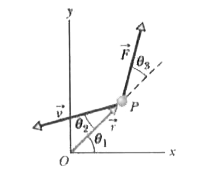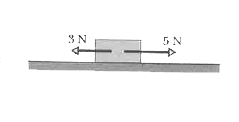Figure 5-44 shows an overhead view of a 0.0250 kg lemon half and two of the three horizontal forces that act on it as it is on a fric tionless table. Force →F1 has a magnitude of 6.00 N and is at θ1=30.0∘. Force →F2 has a magnitude of 7.00 N and is at

θ2=30.0∘. In unit-vector notation, what is the third force if the lemon half (a) is stationary, (b) has the constant velocity →v=(13.0ˆi−14.0ˆj) m/s, and ( c ) has the varying velocity ¯v=(13.0tˆi−14.0tˆj) m/s2, where t is time?
(a) (1.70N)ˆi+(3.06N)ˆj, (b) same, ( c ) (2.02N)ˆi+(2.71N)ˆj.
Topper's Solved these Questions
- FORCE AND MOTION - I BOOK - RESNICK AND HALLIDAYCHAPTER - FORCE AND MOTION - I EXERCISE - PRACTICE QUESTIONS (Single Correct Choice Type)
36 Videos
- FORCE AND MOTION - I BOOK - RESNICK AND HALLIDAYCHAPTER - FORCE AND MOTION - I EXERCISE - PRACTICE QUESTIONS (More than One Correct Choice Type)
5 Videos
- FORCE AND MOTION - I BOOK - RESNICK AND HALLIDAYCHAPTER - FORCE AND MOTION - I EXERCISE - CHECKPOINT
5 Videos
- FLUIDSBOOK - RESNICK AND HALLIDAYCHAPTER - FLUIDSEXERCISE - PRACTICE QUESTIONS (Integer Type )
5 Videos
- FORCE AND MOTION-IIBOOK - RESNICK AND HALLIDAYCHAPTER - FORCE AND MOTION-IIEXERCISE - PRACTICE QUESTIONS (Integer Type)
1 Videos
Similar Questions
Sum of magnitudes of the two forces acting at a point is 16N if their resultant is normal to the smaller forces and has a magnitude 8N then the forces are .
View SolutionSum of magnitudes of the two forces acting at a point is 16N if their resultant is normal to the smaller forces and has a magnitude 8N then the forces are .
View Solution
Knowledge Check
Three forces are applied to an object, as indicated in the drawing. Force →F1 has a magnitude of 21.0 newton (21.0N) and is directed 30.0∘ to the left of the +y axis. Force →F2 has a magnitude of 15.0 N and points along the +x axis. What must be the magnitude and direction (spectified by the angle θ in the draeing) of the third force →F3 such that the vector sum of the three force is 0 N ?
 A16.9N,81∘B20.4N,75∘C22.3N,79∘D18.7N,76∘
A16.9N,81∘B20.4N,75∘C22.3N,79∘D18.7N,76∘A force →F1 of magnitude 9 N makes an angle of 30∘ with the X-axis. Another force →F2 of magnitude 12 N, makes an angle of 120∘ with the X-axis. What is the magnitude of the resultant force ?
A7.5 NB10 NC12.5 ND15 N
Two horizontal forces act on a 2.5 kg chopping block that can slide over a frictionless kitchen counter, which lies in an xy plane. One force is →F1=(3.0 N)ˆi+(4.0N)ˆj. Find the acceleration of the chopping block in unit-vector notation when the other force is (a) →F2=(−3.0N)ˆi+(−4.0N)ˆj, (b) →F2=(−3.0N)ˆi+(4.0N)ˆj, and (c) →F2=(3.0N)ˆi+(−4.0N)ˆj.
View SolutionAt the instant of Figure, a 2.0 kg particle P has a position vector →r of magnitude 5.0 m and angle θ1=45∘ and a velocity vector →v of magnitude 4.0 m/s and angle θ2=30∘, Force →F, of magnitude 2.0 N and angle θ3=30∘, acts on P. All three vectors lie in the xy plane. About the origin, what are the (a) magnitude and (b) direction of the angular momentum of P and the ( c) magnitude and (d) direction of the torque acting on P?

View SolutionThe figure here shows two horizontal forces acting on a block on a frictionless floor. If a third horizontal force →F3 also acts on the block, what are the magnitude and direction of →F3 when the block is (a) stationary and (b) moving to the left with a constant speed of 5 m/s ?

View SolutionThe two forces 2√2N and xN are acting at a point their resultant is perpendicular to ˆxN and having magnitude of →6N. The angle between the two forces and magnitude of x are
View SolutionThe resultant of two forces has magnitude 20N. One of the forces is of magnitude 20√3N and makes an angle of 30∘ with the resultant. Then what is the magnitude of the other force?
View SolutionThe resultant of two forces has magnitude 20N. One of the forces is of magnitude 20√3N and makes an angle of 30∘ with the resultant. Then what is the magnitude of the other force?
View Solution
